- Rogers House Sign, Emmitsburg Road
- Dearing’s Battalion, Hampden’s Artillery, Caskie’s Battery positions the afternoon of July 3rd 1863.
- Hampden’s Artillery, Caskie’s Battery Position Emmitsberg Road, by the Rogers House
- Richard Sanford Jones. Abt: 1870
- Dearing’s Battalion Sign at Gettysburg
- Hampdens Artillery, Gettysburg Pennsylvania
So let’s start with my name. I’m Gene and I live in North East Pennsylvania. I grew up in Staten Island N.Y. with my wife Melinda and in 2007 we moved to the mountains in NEPA. I’ve always had an interest in the C.W. but it wasn’t until we moved to Pennsylvania that my interest grew to obsession.
Not long after we moved to Pennsylvania I discovered I had family in Chancellorsville Virginia. My father’s family migrated from Wales to America in 1630 settling in Williamsburg VA. then to Locust Grove Va. (just northwest of the Wilderness Battlefield). My 5th Great Grandfather Thomas T. Jones (born 1741) served with the Virginia State Militia during the Revolutionary War. His son James Jones, my 4th Great grandfather (born 1758) also served in the Revolutionary War. James Jones who marries Catharine “Caty” Robinson has 14 children 8 boys and 6 girls. One of those boys is Fielding Jones who marries Mary “Polly “Johnson of Locust Grove, Raccoon Ford Virginia.
They have 11 children 9 boys 2 girls, 2 of the boys, twins Gilcrest and Isreal die as infants yet another boy is still born of the other 6 boys Churchill, Fielding, James, Richard (my Gr.Gr. Grandfather), Issac and Thomas all 6 serve in Lee’s Army of Northern Virginia.
Churchill Jone serves in the 9th Calvary, Johnsons Regiment. Issac Jones serves as a Scout for Stonewall Jackson and Mosby Ranger’s. Fielding and James both serve the Confederacy but my research is not complete.
Thomas Jones Enlists in Hampdens Artillery, 38th Battalion and is taken prisoner at Woodstock Virginia near Tom’s Brook June of 1862, in August of 62 he is returned during a prisoner exchange, he is wounded June 3rd 1864 during the battle of Cold Harbor and serves the rest of the war in and out of hospitals, but mostly at Stuart’s Hospital in Richmond Virginia, he lives until 1915.
That takes us to my Great Great Grandfather Richard Sanford Jones who enlists in the spring of 1862 with his brother Thomas in Fredericksburg Virginia and both serve in Hampdens Lt. Artillery, 38th Battalion. Both Brothers serve throughout the war with no absents on their military records (I assume they were good soldiers). Both brothers are at the battles of Antietam, Winchester, Fredericksburg, Chancellorsville, Gettysburg, different Valley Campaign battles, Cold Harbor, Petersburg they also spent sometime in New Bern North Carolina all in all a very impressive portfolio of engagements, somehow they both managed to survive the war.
At the battle of Gettysburg Richard and Thomas are assigned to Caskie’s Battery. Caskie’s Battery is assigned to the 38th Battalion which is in Longstreet’s Army, Pickett’s Division, Dearing’s Battalion, Hampden’s Artillery and Caskie’s Battery. It is well documented in Robert H. Moore’s book” The Richmond Fayette, Hampden, Thomas, and Blount’s Lynchburg Artillery”.
On July 1st the battle of Gettysburg opened while the 38th Battalion remained 25 miles away. At 1 or 2 AM the following morning (July 2nd) the 38th Battalion arrives at Gettysburg. At about dusk on July 2nd Dearing receives orders to “move at once to the field of battle, which was done”. The Battalion Bivouacked for the night in the rear of the line of battle of the First Corps in anticipation of the following day.
At about daybreak on July 3rd the Battalion “marched up to the line of battle, and was, later in the morning, put in position on the crest of the hill immediately in front of the enemy’s position… “The Battalion stood between the Cordori and Rogers houses, with its center approximately 530 yards north of the apple orchard, opposite the house of H. Spangler and immediately east of Emmiteburg Road, 650 yards north of the infamous peach orchard.
Because the 38th Battalion didn’t have infantry support to keep skirmishers at bay, the Union sharp shooters had a field day harassing the artillerymen.
Following the trouble with the skirmishers, the Battalion was prepared to participate in the cannonade to support Pickett’s advance on the enemy line. Lieutenant Clopton wrote: Here we lay until one O’clock, such terrible suspense I never endured.
At 1 p.m. the signal gun from Washington Artillery was fired and Dearing’s Guns moved to the crest of the slight ridge and joined in the terrific cannonade to soften the Federal Lines, The fire from the guns was at first slow and deliberate. Major Dearing recalled:
To ensure more accuracy and to guard against the waste of ammunition, I fired by battery. The firing on the part of the battalion was very good, and most of the shell and shrapnel burst well. My fire was directed at the batteries immediately in my front, and which occupied the heights… Three caissons were seen by myself blown up, and I saw several batteries of the enemy leave the field, At one time, just before General Picketts division advanced, the batteries of the enemy in our front had nearly all ceased firing; a few scattering batteries here and there could be seen to fire.
Lieutenant Clopton remembered: Pickett’s Division emerged from the woods behind us 5000 strong….in a solid line of battle-they passed us and charged straight across the valley in our front which was the valley of the shadow of death for them. The batteries of the enemy now turned on them and how the poor fellows fell but on they rushed and carried the works. They were not supported. The enemy fell on them by Divisions, overwhelming them. The Division was literally crushed. It was a horrid sight. I hope my eyes will never witness such a scene again.
Just before Pickett’s men swept across the field to the front of the Battalion, Dearing sent back the caissons for fresh supplies. The Battalion was supposed to advance in echelon with the infantry. For over an hour and a half Dearing waited, but no fresh ammunition was to be had. Therefore the 38th Battalion was spared greater losses, which it would have taken had it advanced.
The 38th Battalion losses were considerable.
Companies A: KIA 0 WIA 4 MIA 0 Captured 6 Horses Lost 10
Companies B: KIA 3 WIA 3 MIA 0 Captured 7 Horses Lost 8
Companies C: KIA 0 WIA 3 MIA 0 Captured 0 Horses Lost 7 (Richard’s Co.)
Companies D: KIA 4 WIA 3 MIA 0 Captured 0 Horses Lost 12
After the war Richard Jones goes back to the farm in Chancellorsville (Eleys Ford to be exact). What he finds is complete devastation. The fields have been destroyed by the Union army the livestock have been taken or killed the homestead is damaged. It’s fair to say Richard must have been discouraged, angry and broken and who knows what his health must have been after figthing a war with little or no resources for 3 plus years.
Richard is married to Hester (Ester) Eley whose father’s family (Edward Eley) had been deeded 100’s of acres along the Rapidan River from then Governor Alexander Spotswood. Upon Edward Eleys death he deeds Richard 33 1/3 acres of land off Eleys Ford Road just west of the Rapidan River. Richard and Hester have 12 childern 4 girls and 8 boys.

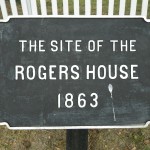
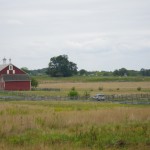
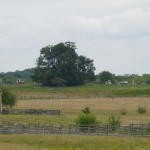
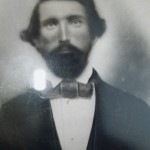
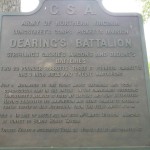
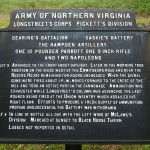
Nice site, but your Gwyn & Campbell stuff, like most other’s , confuses Cosmopolitan and Gwyn & Campbell carbines. I probable could write twenty books, and some people would never understand. Happy hunting and good luck. Tom, Himself.
Dear Sir,
For Sale: What I believe to be… Confederate Shawnee Native American ID’d P-53 Model Enfield Shortened Rifle
Pictures:
https://www.dropbox.com/sh/c8wrapc5e30f1r6/AAAf4aeZbON38QBad37Y6oM8a?dl=0
This Enfield has the side of the wood stock inscribed with the owner’s name: “A. J. Fluke”. He was a Shawnee Native American Indian, fighting for the Confederates, as documented in online Confederate pension records. He survived the war, and became the Vice President of the biggest bank in Shawnee, Oklahoma.
The underside of the brass trigger guard has what appears to be two Cherokee language characters, “Tso-ho” which may Very Tentatively indicate that this 1861 Enfield rifle saw action first in the only Indian Regiment raised in 1861 in Oklahoma, the 1st Cherokee Mounted Volunteer Rifles (Mainly consisting of Cherokee Indians), under to-be Brigadier General Stand Waite.
This original rifle is a slightly un-standard P-53 Model Enfield. It has Birmingham marks:
Barrel has “* – 25 – * 25 – *” Birmingham barrel proof marks for .577 caliber barrel
Lock inside has “W TRANTER”, and “T&LS” for Tipping and Lawden Sons, both of Birmingham
Barrel underside has “T&L” indistinct, for Tipping and Lawden of Birmingham
Although the barrel appears original to the gun, it is cut down with the front of the stock (35 ¾” tip to breechblock), and appears NOT to have ever had a rear ladder sight installed on it. A condition that would likely have made it unfit for Union purchasers, but Possibly sold to the Confederacy out of dire need to scrape up arms early in the Civil War. But if so, it would still have been considered an inferior arm to the Confederate regulars, and thus have been sent out West for American Indian use.
The rifle has seen hard use, and the inside of the barrel is no longer a rifled .577, but a .594 “smoothbore”. Possibly the impoverished Indians fired rocks and nails which would have worn out the bore. A great quantity of ammunition and supplies that were sent to the Indian units were stopped by other needy Confederate units, and the Indians were left with very little to fight with.
Condition issues: Lacking rear leaf sight (was never issued with it), wrong ramrod, ramrod retaining leaf spring gone, one barrel ring loose. The original nipple was shattered but was still used in this condition. Now nipple replaced, not antiqued. Lock works great.
Seller: Bill Jensen, 8630 NE 138th St, Kirkland, WA, 98034. 425-88-4824. wdjensen123@hotmail.com
This fellow is not the listed soldier: Andrew J Fluke…
This guy always went by “AJ” Fluke. Normal Confederate databases will have a hard time finding a native American from Oklahoma Indian Territory, not a recognized state of the CSA.
Heres some info on this Shawnee, Oklahoma Native American, post-war Banker:
From the book “Confederate Veteran” turn of the century, under Oklahoma, “A J Fluke” a Shawnee, got $1 pension.REF:
https://books.google.com/books?id=gCJEAQAAMAAJ&pg=PA44&lpg=PA44&dq=confederate+veteran+%22a+j+fluke%22&source=bl&ots=o4PLPA–4O&sig=lox17a-x2WiOFPzpTc67txId2q8&hl=en&sa=X&ved=0CCAQ6AEwAWoVChMIuJar-eaVyQIVQpeICh10dAg_#v=onepage&q=confederate%20veteran%20%22a%20j%20fluke%22&f=false
Heres a 1916 picture of AJ Fluke, top left of the Shawnee newspaper, high bank official.
C:\Users\WilliamD\Desktop\1861 Enfield CSA Fluke Rifle\Enfield Tranter 1861 Rifle\FLUKE PIC d_ 2 Thursday, August 31, 1916, Sequence 2 The Gateway to Oklahoma History.mht
Its hard to find Indians in the standard databases, and they were typically absorbed by neaby CSA states like Arkansas since CSA didn’t accept official troops from Indian territories as a rule.
Sincerely,
Bill Jensen
I was looking at the Sharps Hankins to which I have one. The thing that I can’t figure out is that mine looks like it is a center fire since mine has no firing pin and the hole is in the center of the breach. Is yours the same?
Thanks Don
Don, The Sharps and Hankins is a center fire weapon, yours is just missing the firing pin. It can be replaced….Lodgewood MFG may have the pieces needed to restore.
Gene
> Don, The Sharps and Hankins is a center fire weapon, yours is just missing the firing pin. It can be replaced….Lodgewood MFG may have the pieces needed to restore.
>
Pingback: Wednesday Weapons Website of the Week: Civil War Arsenal - Vehicle Weapons Lockers
Adam, thanks for the kind words and pingback.
I linked you through the Weapons Man site in edged weapons. Firstly, glad you can boast Rebel blood. It is good to see a younger man interested in such things and joining SCV. My family was marched back into the USA at the point of the bayonet…and ain’t slept easy since.
William Wesley Thompson, Co C, 8th Miss. Inf. Rgmt., survived the battle of Franklin, Tenn. but was captured outside Nashville and sat out the war at Camp Chase, Ohio. Signing the loyalty oath, he walked home to central Mississippi, found his farm burned and family molested, gave each slave family 100 acres and rebuilt his life.
We look back from here to a time when the country was less than 100 years old. It must have been wild times, but we’ll never know. We only dream.
I have several Confederate edged weapons, and the electricity is there. They are all British/German imports, All featuring the Reeves Patent grip system. I wish I had one of those 1853 Enfield rifles that were issued to the reconstruction troops that polluted New Orleans, but so far no luck. Best of luck to you.
Riley, sorry to hear William W. Thompson was held hostage/prisoner at Camp Chase…must have been hell for him, I’ve read horror stories of torture, starvation and desease from that Yankee hell hole. At least he survived, many others didn’t.
That’s for the Rebel Yell, always nice to know there’s others carrying the flag….Battle Flag.
Gene
Very nice site. Keep up the the research. Thanks. Confederateplanet
Very nice site, thank you. I just acquired a Richmond carbine and your site has been very helpful as a reference tool before I made the purchase. Thanks again!
John,
I’m glad I was able to help, hope you enjoy your new Richmond. Please share a picture or two….always interested in seeing another Richmond.
Regards, Gene
I have a SC Robinson carbine that I inherited from my dad. It is number 1800, it is an very good shape with two exceptions. The rear sight is missing and the lock plate apparently came off of a sharps that was manufactured in the north. I don’t know when this was installed, whether during the war, or if the original SC Robinson lot plate was broke my dad replaced it with a similar one. If you ever come across a rare sight and a lock plate/hammer plate 48SC Robinson I would definitely be interested.
He also left me a 1852 Springfield muzzleloader which is also in very good shape. Both are very clean rifling still apparent in the car being Maine Springs good shape stocks are very good shape. The Springfield has initials THH carved in the butt plate or scholar. Also have a what I believe is a Civil War Calvary sort. Solid brass handle seat is made of leather with brass And top only markings I can find on the sword or a small step that appears to have the letters quote M a “and a number stamped on the blade. I’ve never been able to figure out the background on the saber. If you can help in any way with the parts I would greatly appreciate it. I look forward to hearing from you, hopefully you’re still in business since I see this post was back a few years.
.
Jim,
If will be extremely difficult to find a lock plate for the Robinson Carbine you have, however if I ever see one available I’ll certainly think of you. The rear sight can probably be recreated by a qualified gunsmith.
If you are able to find a lock plate for your carbine not only will it have a different serial number then the remaining parts but it will also cost between 2 & 3k.
Regards, Gene West
Hi.
I have a Joslyn 1862 carbine with missing exstractor. Find plenty photos on net but not just the exstractor who is complex part to make a replika. So is there any photos of just the part somewhere?
Runar